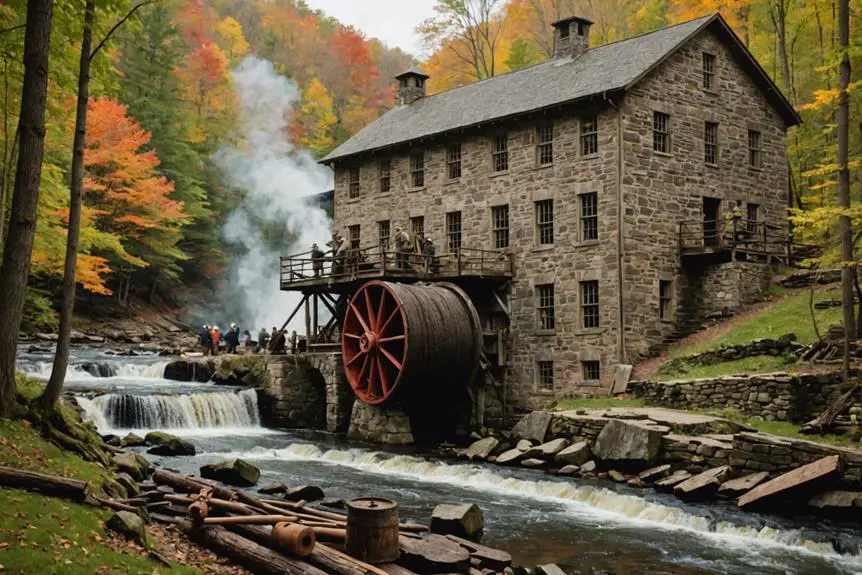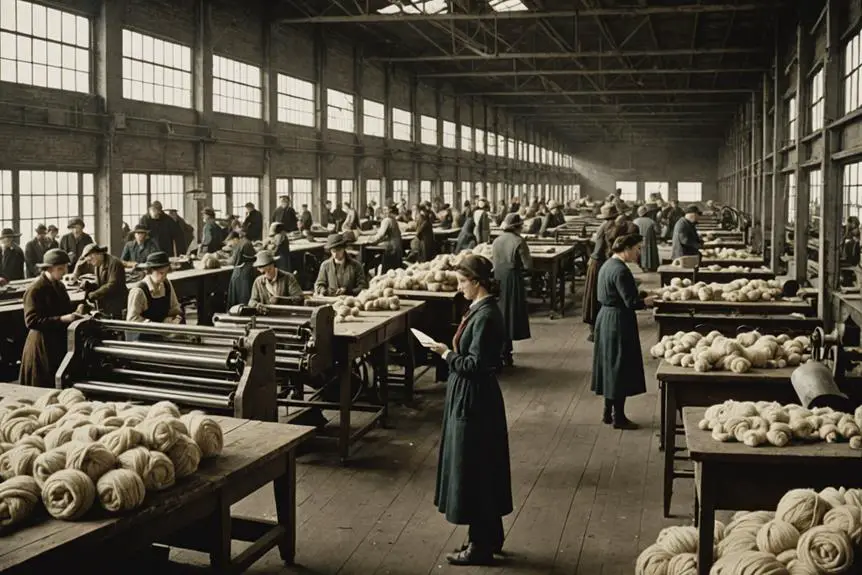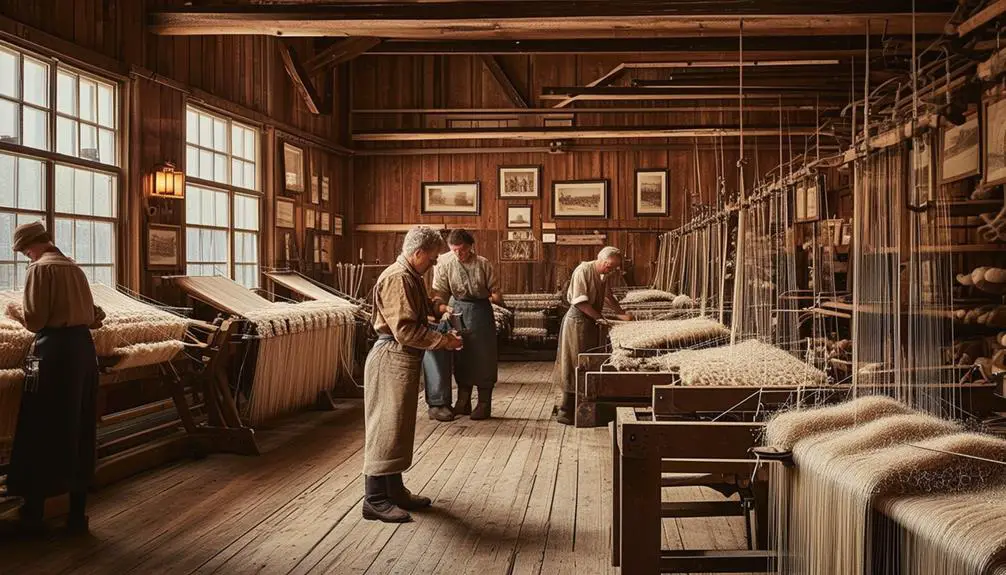Woolrich, established in 1830 by John Rich and Daniel McCormick, began its journey as a purveyor of premium woolen fabrics in Pennsylvania. The brand gained prominence for its high-quality blankets and uniforms during the Civil War and subsequent military conflicts. As the years progressed, Woolrich faced various economic hurdles, which led to layoffs and the outsourcing of production, eventually resulting in the closure of its last U.S. plant in 2018.
Today, Woolrich is committed to adapting to contemporary fashion markets while honoring its rich heritage. The brand places a strong emphasis on quality craftsmanship and wildlife conservation, ensuring that its products resonate with modern consumers who value both style and sustainability. This iconic label continues to evolve, seamlessly blending traditional aesthetics with innovative design practices. Discover more about Woolrich's ongoing journey and its significant influence in the fashion industry.
Founding and Early Years

Woolrich's founding in 1830 marked the beginning of a significant chapter in American outdoor apparel history. Established by John Rich and Daniel McCormick in Plum Run, Pennsylvania, the company initially focused on producing high-quality woolen fabrics tailored for local outdoor workers and their families. This early emphasis on functionality laid the groundwork for Woolrich's long-standing commitment to durability and utility in apparel.
In 1845, the original mill moved to Chathams Run to tap into superior water supply and timber resources, enhancing production capabilities. By 1850, Woolrich introduced the iconic Buffalo Check pattern, inspired by Rich's buffalo herd, which became emblematic of the brand's rugged identity.
During the Civil War, from 1861 to 1865, Woolrich gained significant prominence by supplying wool blankets to the Union Army, solidifying its reputation as a reliable outfitter for those in need. As the late 19th century approached, Woolrich diversified its offerings, creating garments such as the Railroad Vest in 1890. This expansion marked Woolrich's evolution into a key player in the outdoor apparel market, combining historical craftsmanship with innovative design.
Contributions During War
The legacy of Woolrich as a prominent outdoor apparel manufacturer is further underscored by its significant contributions during wartime. From the Civil War to World War II, Woolrich established itself as a reliable supplier of military supplies, ensuring that service members had the necessary gear to endure harsh conditions.
| Conflict | Woolrich Contributions |
|---|---|
| Civil War | Supplied blankets and uniforms to the Union Army |
| World War I | Provided blankets for U.S. Army soldiers |
| World War II | Produced blankets, socks, and coats for military personnel |
| Expertise | Delivered durable and warm outdoor apparel |
| American History | Highlighted role as a trusted military supplier |
During the Civil War (1861-1865), Woolrich's blankets helped bolster the Union Army's efforts. In World War I (1917-1918), the company continued its support by providing essential blankets for soldiers. The commitment intensified during World War II (1942), as Woolrich produced crucial items to equip troops effectively. Each of these contributions not only underscores Woolrich's dedication to service members but also emphasizes its enduring influence on American history.
Economic Changes and Challenges

Economic changes and challenges have greatly impacted Woolrich throughout its history, particularly in the latter part of the 20th century. In the 1990s, Woolrich faced significant layoffs, reducing its workforce from 2,600 to 1,400 employees. This reduction stemmed from increased competition with brands like L.L.Bean and The North Face, forcing Woolrich to adapt its manufacturing strategy. In 1990, the company outsourced much of its production to Mexico, which resulted in fluctuating employment numbers that dwindled to about 200 by 2013.
The closure of Woolrich's last U.S. plant in 2018 marked a pivotal moment, highlighting broader economic challenges within the American textile industry. Following a change in ownership, with L-GAM acquiring majority control, Woolrich shifted its focus to global operations and collaborations, including partnerships with brands like Goldwin. Despite these challenges, the company's annual turnover reached $190 million in 2016, with projections for growth to $300 million from 2017 to 2020. This potential for growth demonstrates Woolrich's resilience in maneuvering economic challenges, even as it redefined its production and workforce strategies in response to a changing market landscape.
Wildlife Conservation Efforts
Engaging in wildlife conservation efforts, Woolrich has played a significant role in promoting responsible hunting practices among outdoor enthusiasts. The brand actively emphasizes the importance of hunters in wildlife conservation, showcasing how their contributions help manage surplus animal populations and fund critical initiatives through license fees. By highlighting these roles, Woolrich fosters a deeper understanding of the balance between outdoor culture and environmental responsibility.
Woolrich's educational initiatives, such as "Animal Tracks On the Hunt" and "Preparing for the Hunt," enhance awareness and skills related to wildlife tracking and responsible hunting. These programs are designed to instill sustainable practices among participants, ensuring that they appreciate the natural environment while hunting.
Furthermore, Woolrich collaborates with educators to develop lesson plans focused on various conservation topics, which strengthens community engagement and promotes a sense of responsibility toward wildlife. This commitment to wildlife conservation not only reflects the brand's heritage but also reinforces its dedication to preserving the outdoor culture that its customers cherish. Through these efforts, Woolrich exemplifies how businesses can lead in fostering environmentally conscious practices within the outdoor enthusiast community.
Educational Outreach and Engagement

Education serves as a cornerstone of Woolrich's commitment to wildlife conservation. Through various educational activities, the brand fosters critical thinking and engagement with key conservation topics. Programs like "Animal Tracks On the Hunt" and "Preparing for the Hunt" are specifically designed to enhance understanding of wildlife tracking and responsible hunting practices. These initiatives not only promote awareness but also encourage participants to engage with discussion questions that stimulate thoughtful dialogue.
Woolrich emphasizes collaboration among educators to develop effective lesson plans that align with conservation efforts. By sharing resources and strategies, educators can create engaging curricula that resonate with diverse audiences, fostering a deeper appreciation for wildlife conservation. The company's dedication to community involvement is evident in its support for initiatives like the Fashion Archives and Museum, demonstrating a commitment to cultural education alongside environmental stewardship.
Ultimately, Woolrich's educational outreach reflects a holistic approach to wildlife conservation, uniting critical thinking, collaboration, and community engagement. By actively involving audiences in these educational endeavors, Woolrich cultivates a sense of responsibility and awareness, empowering individuals to contribute positively to wildlife conservation efforts.
Current Status and Future Directions
Woolrich stands at a significant moment in its history, balancing its rich heritage with modern market demands. As a prominent outdoor clothing company, it's essential for you to recognize how Woolrich is actively adapting to remain competitive against brands like Patagonia and North Face. The company's commitment to domestic production is evident in its plans to move more of its workforce back to the U.S., which not only supports job creation but also enhances its brand appeal through ethical manufacturing practices.
Woolrich is also focusing on product line expansions and innovative collaborations, showcasing its dedication to growth while maintaining a strong emphasis on quality and craftsmanship. By utilizing durable materials, the brand guarantees that its products uphold the legacy of reliability and performance that has defined it for generations.
This strategic approach highlights Woolrich's understanding of the need to preserve its heritage while embracing contemporary trends. As you observe Woolrich's journey, it's clear that the brand is poised to thrive in the evolving outdoor apparel market, driven by a blend of tradition and innovation.
Frequently Asked Questions
Where Did Woolrich Originate?
Woolrich originated in Plum Run, Pennsylvania. Founded by John Rich in 1830, it initially focused on producing woolen fabrics and blankets for local families, especially catering to the needs of hunters and their families.
When Did Woolrich Stop Making in the Usa?
Woolrich stopped making products in the U.S. in 2018, closing its last domestic production facility. This move reflected broader industry trends of outsourcing manufacturing due to economic pressures and increasing global competition.
Who Owns Woolrich Now?
As of now, Woolrich is primarily owned by L-GAM, a Luxembourg-based investment company. This ownership shift has influenced Woolrich's strategic direction, allowing it to expand its brand portfolio and adapt to evolving market demands.
Is Woolrich a High-End Brand?
Yes, Woolrich is considered a high-end brand due to its premium materials, craftsmanship, and strategic collaborations. Its pricing reflects a focus on luxury outdoor apparel, appealing to discerning consumers seeking authenticity and quality in their purchases.




Launch into the expansive realm of EVE Online. Become a legend today. Build alongside thousands of explorers worldwide. [url=https://www.eveonline.com/signup?invc=46758c20-63e3-4816-aa0e-f91cff26ade4]Download free[/url]